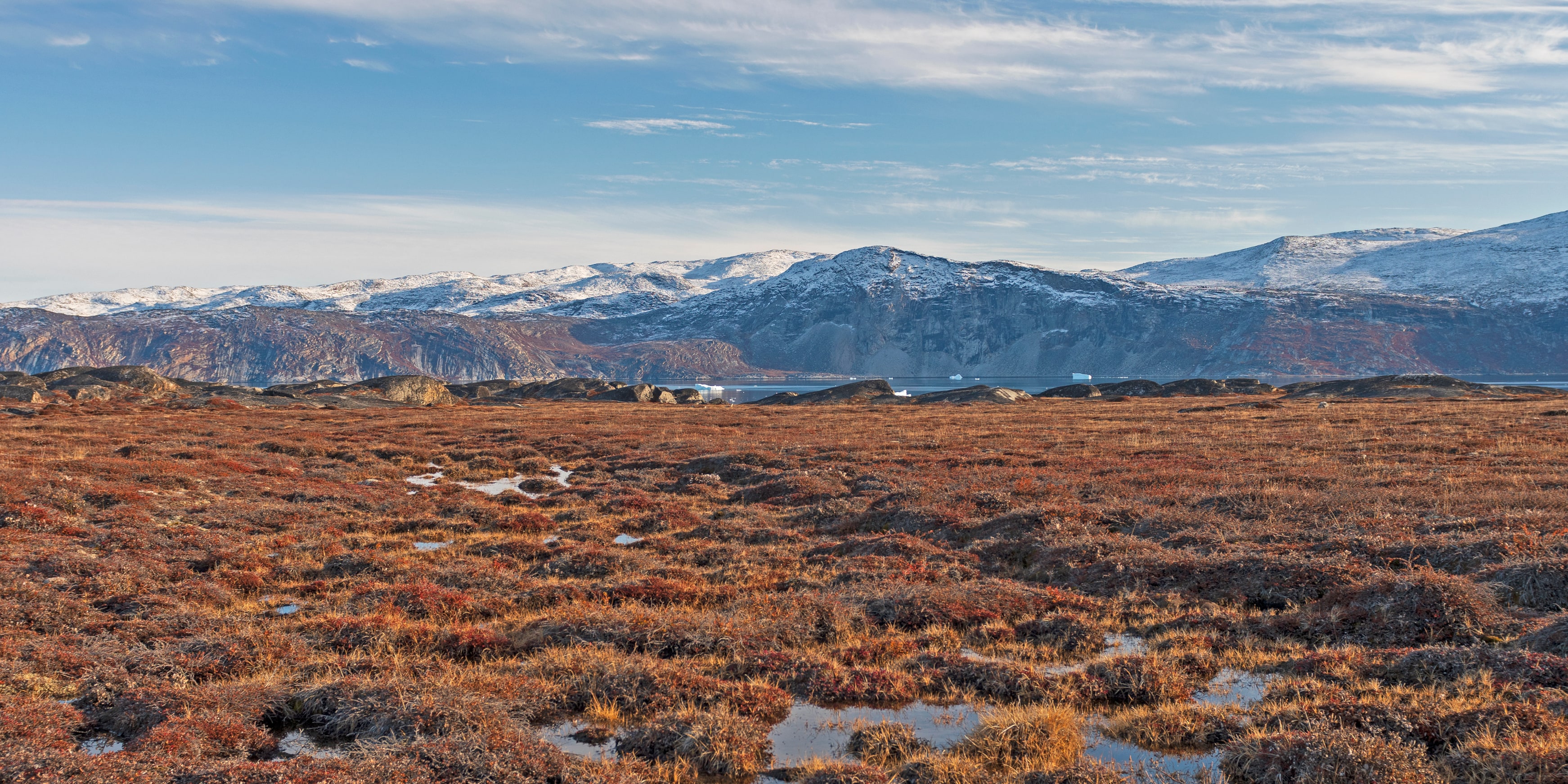
A tundra wetland with permafrost soil in Greenland Getty Images/iStockphoto
Billions of tonnes of CO and nitrogen are stored in one of the most inaccessible areas on Earth. What is known as the permafrost soil extends over about five million square miles of land in the Arctic region. Under the icy surface it holds large amounts of climate-damaging gases captive – a valuable aid for the climate.
Rapid shrinking
A soil is considered “permafrost” when its temperatures are consistently below freezing for at least two years. However, due to global warming caused by climate change, the permafrost soils have shrunk by seven percent in the last 50 years – with unforeseeable consequences for the climate. Because when the frozen soil melts, all the climate-damaging gases that have been locked away for millions of years are released back into the atmosphere.
A crucial tipping point in this development has already been surpassed, a new study finds. For several years now, the permafrost soils have been emitting more CO than they absorb. The melting ice has thus turned the climate change brake into a turbo. The permafrost region emitted a total of 144 million tonnes of carbon per year between 2000 and 2020, according to a new study by the renowned research institute Nordregio in Stockholm.
Unprecedented effort
Study leader Justine Ramage and her team are thus contradicting a large part of the studies of recent years. Most current studies concluded that the region still represents what is known as a carbon sink. Although more and more ice is melting, there is more plant growth in the summer, and plants also absorb CO.
For their study, however, Ramage’s team went to an unprecedented effort. Many permafrost studies are based on satellite data and computer estimates, making the results correspondingly uncertain. The Swedish researchers, on the other hand, collected emission data from a total of 200 locations in Scandinavia, Russia, Alaska and Canada. And, very importantly, they also included the emission of other toxic gases such as methane in their calculations – instead of just considering the CO emissions, like most studies.
The refrigerator effect
“When you freeze food, everything is fine,” Ramage told the magazine “New Scientist.” “As soon as you take it out, it starts to rot very quickly.” The effect is similar with thawing permafrost: when the ice disappears, the frozen microbes start working again – often with bad consequences for the climate.
The positive effect of plant growth is also overrated, the study concludes. On the one hand, due to the melting ice, many permafrost zones are transforming into lake districts, which reduces the growth potential for plants. And on top of that, previous studies on the subject did not take into account that global warming also leads to large forest fires in the region – which emit massive amounts of CO.
“This is a new source”
However, what also applies to the study by Ramage’s team is that it is hardly possible to determine exact figures for CO emissions in the inaccessible Arctic region. The methodology is slowly improving, but the permafrost region is so huge that any measurement must rather be compared to an estimate. The phenomenon of “sudden thawing,” which occurs, for example, due to rock falls and landslides, is particularly problematic. Large amounts of soil thaw all at once – but researchers may not even notice it.
Only one thing is certain, experts say: we are probably still underestimating the effects of the polar ice melt on the climate. The trend reversal in the permafrost will make climate change worse than expected, US researcher Susan Natali, who was involved in the Stockholm study, told “New Scientist.” “This is a new source of greenhouse gases escaping into the atmosphere – which we have not yet fully accounted for in our global climate models.”
News Related-
Pedestrian in his 70s dies after being struck by a lorry in Co Laois
-
Vermont shooting updates: Burlington police reveal suspect’s eerie reaction to arrest
-
Grace Dent says her ‘heart is broken’ as she exits I’m A Celebrity early
-
Stromer’s ST3 Urban E-Bike Goes Fancy With Minimalist Design, Modern Tech
-
Under-pressure Justice Minister announces review of the use of force for gardaí
-
My appearance has changed because of ageing, says Jennifer Lawrence
-
Man allegedly stabbed in the head during row in Co Wexford direct provision centre
-
Children escape without injury after petrol bomb allegedly thrown at house in Cork City
-
Wexford gardai investigating assault as man is bitten in the face during Main Street altercation
-
Child minder’s husband handed eight year sentence for abusing two children
-
The full list of the best London restaurants, cafes and takeaways revealed at the Good Food Awards
-
Mazda CEO Says EVs 'Not Taking Off' In The U.S.—Except Teslas
-
Leitrim locals set up checkpoint to deter asylum seekers
-
Ask A Doctor: Can You Get Shingles More Than Once?
